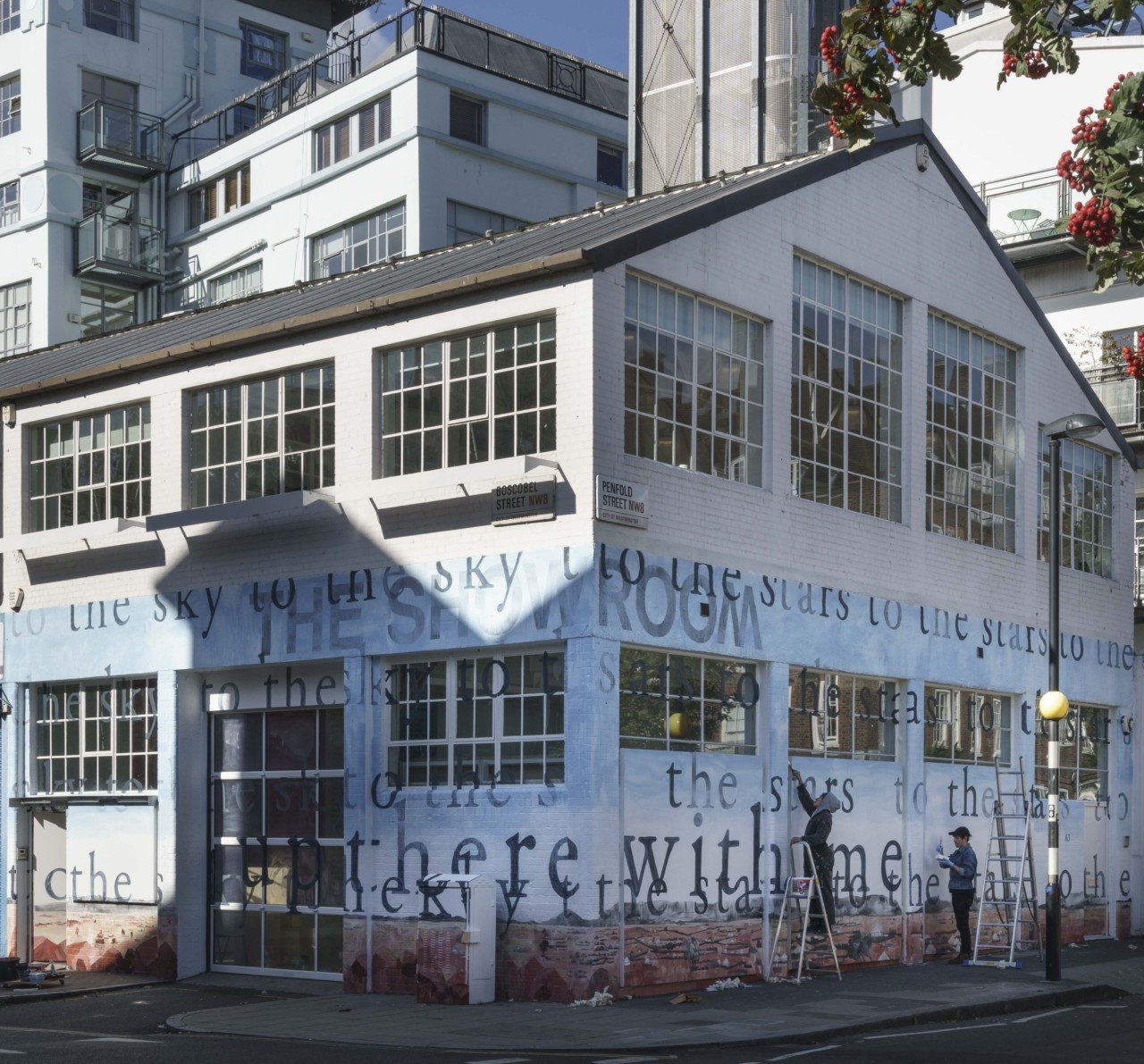


Pamela Phatsimo Sunstrum, Exalt B.H., 2018. Painted mural on exterior of The Showroom, London. Photo: Daniel Brooke. © Pamela Phatsimo Sunstrum. Courtesy the artist.
This year has seen a number of shows across the country that seek to uncover forgotten histories – Speech Acts at Manchester Art Gallery focuses on UK artists of African and Asian background, Still I Rise at Nottingham Contemporary and Women Power Protest at Birmingham Art Gallery explore women-led resistance movements, whilst Coming Out at the Walker Art Gallery in Liverpool revealed the hidden queer histories within institutions.
It is welcome to see larger museums pick up on the discourses that many smaller spaces, such as Cubitt Gallery or Gasworks in London, have been highlighting for years. The latest of these research projects has resulted in Women on Aeroplanes at The Showroom, just off Edgware Road, which presents the largely unrecognised roles women played in the history of the struggle for independence of African nations in the 1950s and ‘60s.
Borrowing its title from a novel of the same name by Ghanaian writer Kojo Laing (1946-2017), Women on Aeroplanes is an international exhibition and research project taking place at five different exhibition venues in Africa and Europe between 2017 and 2019.
The London iteration of the exhibition was co-curated by The Otolith Group, who were shortlisted for the Turner Prize in 2010. The exhibition features new work by three female artists Pamela Phatsimo Sunstrum, Lungiswa Gqunta and Emma Wolukau-Wanambwa. This is accompanied by a series of publications, titled inflight magazines, that are edited by the Project’s international curatorial team. Each issue reflects the research-in-progress nature of the entire project and we are invited to take a magazine away with us.
From the street outside the gallery it is impossible to ignore Pamela Phatsimo Sunstrum’s site-specific mural that covers the entire lower half of The Showroom’s façade. It is inspired by South African writer and anti-apartheid activist Bessie Head (1937-86), who was born of an illicit interracial relationship in South Africa. Today Head is regarded as one of the most acclaimed female African authors, however for a long time she lacked public recognition for her writing talent.
As a young woman, Head rejected the brutality of apartheid by exiling herself to the village of Serowe in Botswana. Sunstrum’s mural, titled Exhalt B.H., presents a view of Serowe’s desert-like landscape dominated by a large strip of blue sky – a significant element in Head’s writings. The sky is overlaid with excerpts from Head’s text Earth and Everything, a short piece written shortly after she first arrived in Botswana in the mid-60s, though not published until 1993. It reads: ‘I am building a stairway to the stars. I have the authority to take the whole mankind up there with me. This is why I write.’
Lungiswa Gqunta’s installation What songs will we sing when everything returns to us immediately immerses us as we enter the gallery space. For this exhibition, Gqunta conceived the idea of a garden of exile, reflecting on the hardship that South African women in exile suffered. Tangled barbed wire wrapped in green fabric dangles down from the ceiling, resembling a particularly vicious thicket of branches. Battling through, we encounter a series of seemingly abstract drawings displayed on the pink walls. On inspection, these drawings visually reference barbed wire but resemble notations, drawing on Gqunta’s research into the use of sound and song as modes of resistance in response to the often-hidden structures of violence that persist as a result of colonialism. Connoting barriers and the violence of border segregation, Gqunta’s installation and beautiful intricate drawings gain a new, unsettling meaning.
Emma Wolukau-Wanambwa’s installation showcases her research into the life of the revolutionary Pan-Africanist Amy Ashwood Garvey (1897-1969), whose accomplishments have mainly been forgotten today. In 1914 she co-founded the Universal Negro Improvement Association (UNIA) with her husband Marcus Garvey, whom she divorced in 1919. In the 1940s, whilst living in London, she established the Afro-Women’s Centre in Notting Hill and helped to organise Manchester’s Fifth Pan-African Congress, where she spoke about Black working women and their need for fair wages.
Wolukau-Wanambwa’s display, titled Carrying Yours and Standing Between You, consists of five wooden research stations where we can sit and delve into archive folders that contain newspaper clippings, images and the artist’s own writings, which highlight and reflect upon the varied mechanisms that have resulted in Garvey’s marginalisation within official historiography. Copies of correspondence between Wolukau-Wanambwa and archive librarians offer a deeper understanding of the painstaking process of salvaging this important material from oblivion. The far-end of Wolukau-Wanambwa’s installation is occupied by five brightly coloured banners which proudly hang on the wall, displaying quotes from newspaper clippings celebrating Garvey’s many accomplishments.
Women on Aeroplanes is a timely exhibition that is revelatory in uncovering the predominantly unknown role women played in the process of decolonialisation. It tells alternative stories about powerful women, rarely shared before – not even during Black History Month. It is also an invitation to reflect on how we commemorate and represent historical moments and people, provoking us to think about who is rendered invisible or unacknowledged by history and present culture.
Christine Takengny
Curator
The Showroom, 63 Penfold Street, London NW8 8PQ. Open Wednesday-Saturday 12.00-18.00. Exhibition continues until 26 January 2019. www.theshowroom.org